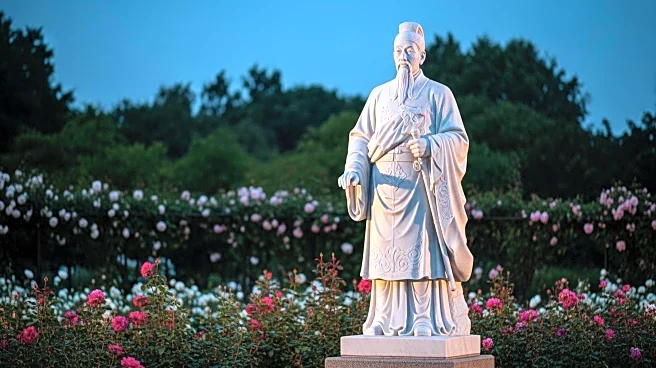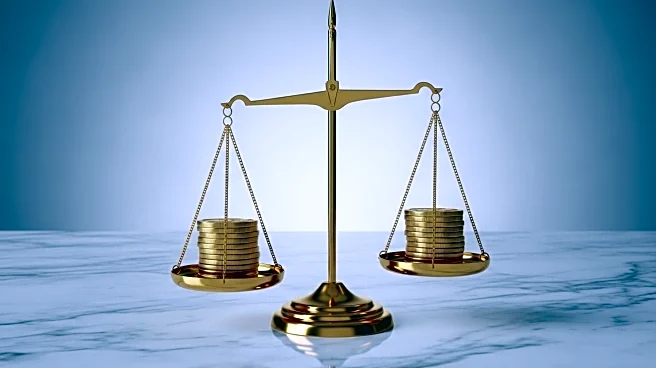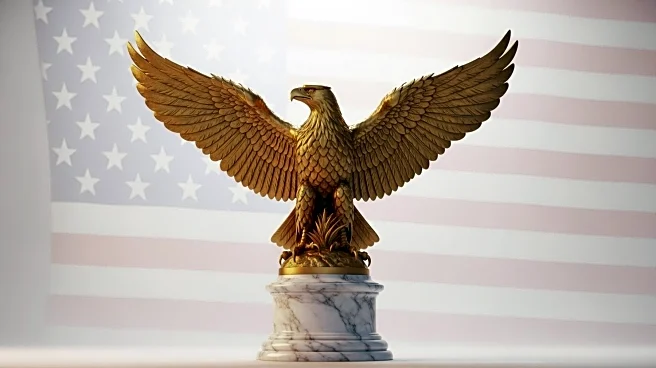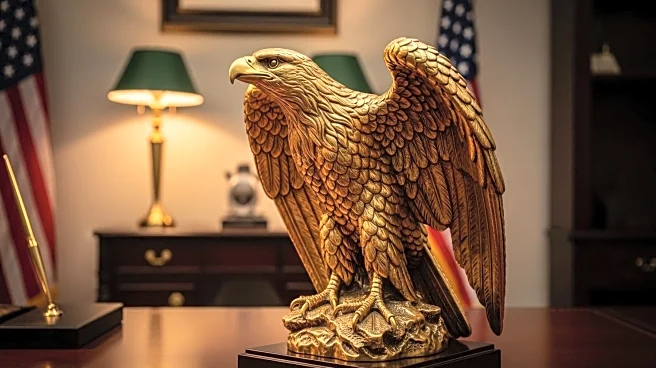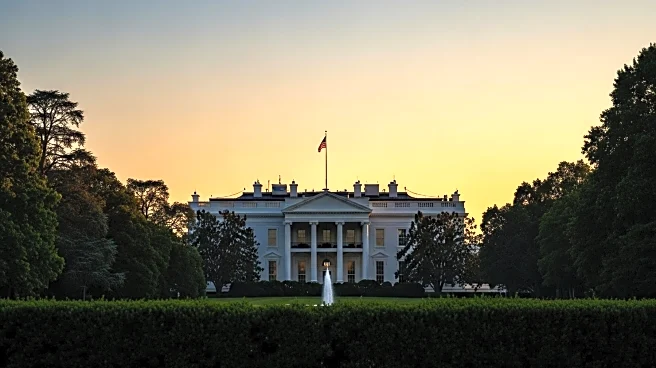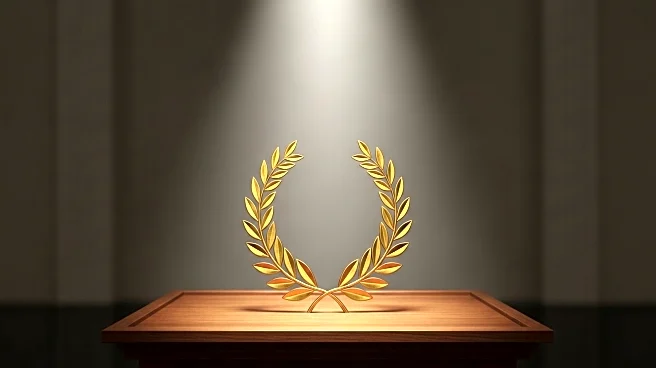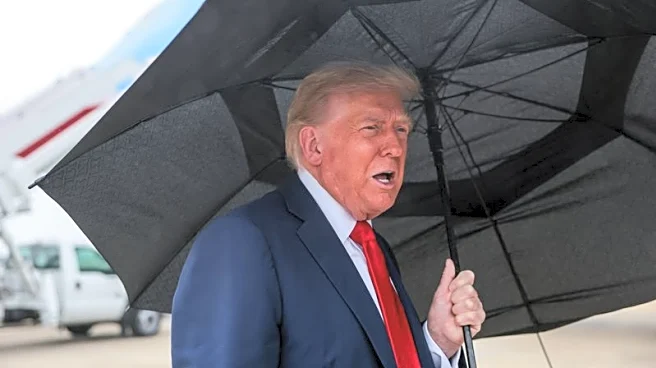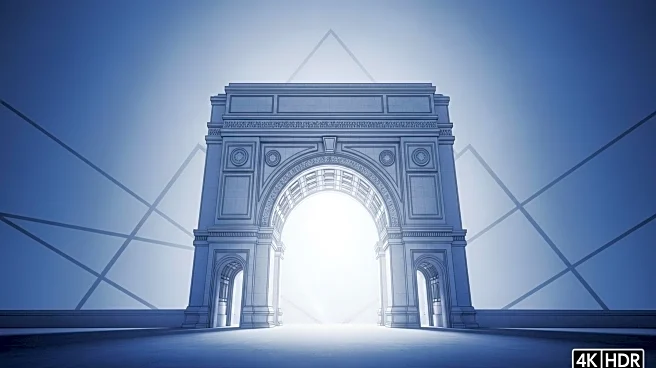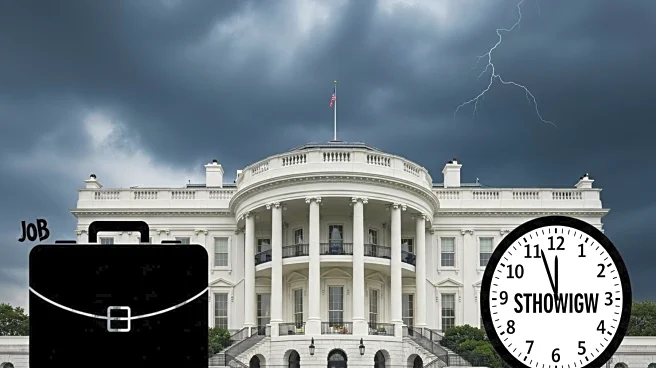What is the story about?
What's Happening?
The White House has recently added a large bronze statue of George Washington to the Rose Garden, following a request from President Trump. This statue, originally located at the Washington Monument, was moved during the ongoing government shutdown. The statue, a reproduction of the original marble piece by French artist Jean-Antoine Houdon, is managed by the National Park Service. It was initially installed at the Washington Monument during renovations in the late 1990s and has been a public attraction for years. The statue's relocation is part of broader changes to the White House grounds, including the installation of flag poles and paving over grass areas. Additionally, President Trump has announced plans for a new ballroom to replace the East Wing, estimated to cost $200 million.
Why It's Important?
The installation of the George Washington statue in the Rose Garden reflects President Trump's ongoing efforts to reshape the White House grounds according to his vision. This move, occurring during a government shutdown, highlights the administration's priorities amidst budgetary constraints affecting federal operations. The statue's relocation may symbolize a focus on historical legacy and national pride, potentially influencing public perception of the administration's commitment to preserving American history. The planned ballroom construction further indicates significant investment in White House infrastructure, which could impact future events and diplomatic engagements hosted at the venue.
What's Next?
The National Park Service will continue to monitor and maintain the statue to prevent oxidation, which could alter its appearance. The construction of the new ballroom is expected to proceed, with President Trump indicating it will be larger than initially planned, accommodating up to 900 guests. This expansion may lead to increased hosting capabilities for state functions and public events. Stakeholders, including government officials and historians, may react to these developments, considering the implications for historical preservation and fiscal responsibility during a period of government shutdown.
Beyond the Headlines
The relocation of the George Washington statue and the planned ballroom construction may raise questions about the ethical use of resources during a government shutdown. The focus on aesthetic and infrastructural changes at the White House could be seen as prioritizing image over operational efficiency. Additionally, the emphasis on historical figures and national symbols may reflect broader cultural narratives promoted by the administration, potentially influencing public discourse on national identity and heritage.
AI Generated Content
Do you find this article useful?
